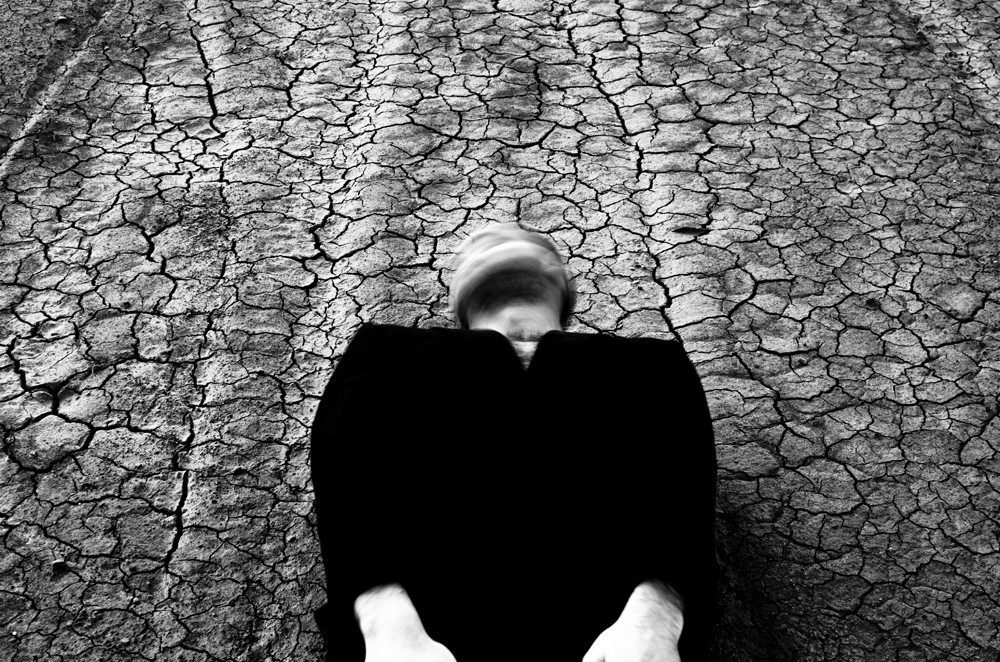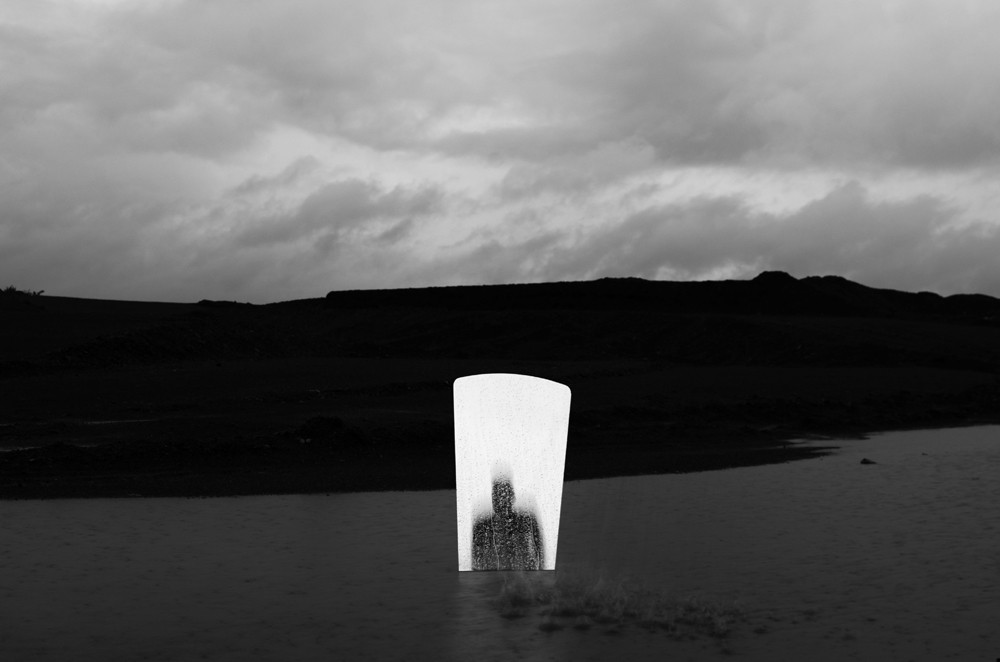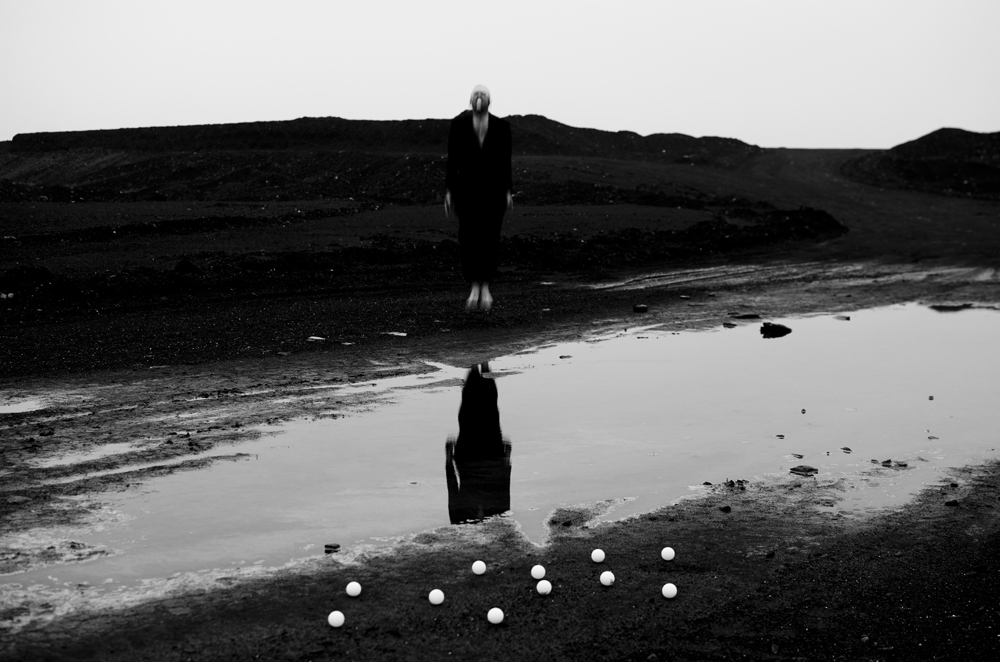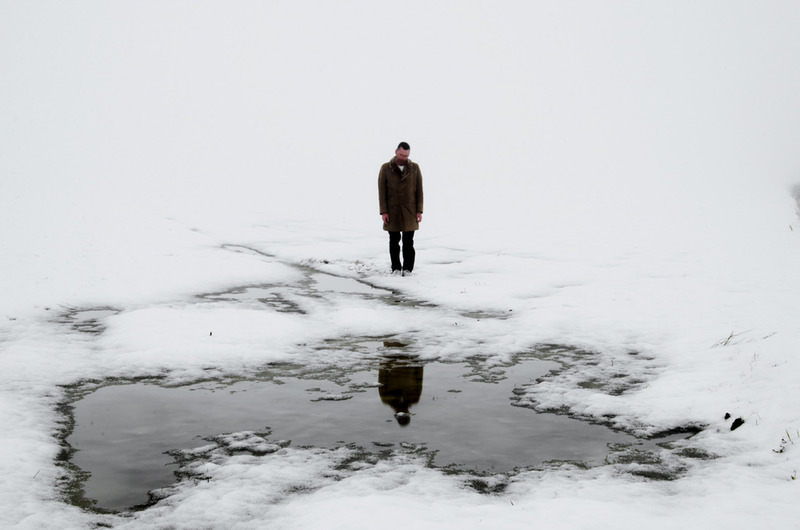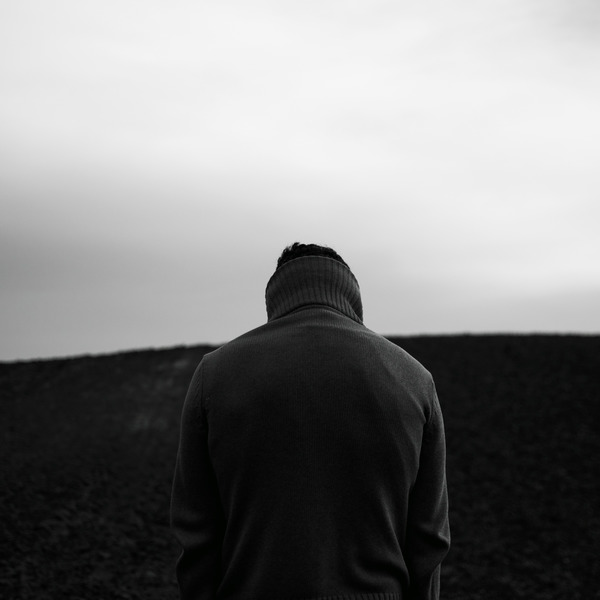How do Phillip Toledano and Laia Abril explore notions of change, fate and absence in their work?
“Photographs are the story we fail to put into words.”- Destin Sparks
Photographs can be seen as the story-telling companions of time, they direct the gaze of the spectator to look at the past, allowing us to reflect on our own lives and the lives of others. Photographs allow the ability to communicate and capture small moments in time when particular emotions are felt. As said by Alfred Eisenstaedt “It is more important to click with people than to click the shutter.” It is this I explore in my personal study as I consider the change, reflecting on the past and the present of my Granddad’s life after a tragic event, which has changed his life forever. I have looked at and particularly been inspired by the work of Phillip Toledano, a photographer who is probably best known for his work dedicated to his father’s final chapter.
In this essay, I will be focusing on the ways that Toledano and Abril explores change, fate and absence in their work, particularly focusing on his project entitled ‘Days with my Father’ and her project entitled ‘The Epilogue.’ I will be creating links to my own personal study, which also investigates and reflects upon the fate, absence and specifically change within my Granddad’s life. Having looked at archival photographs through my own personal family photo box, it has allowed me to discuss memories of his life, which I have used to inform my current photographs with the purpose of exploring the change and absences which have taken place. These absences and change are seen in various ways throughout the project as the two words form a relationship with the images to tell a story. Examples of the absences displayed is loved ones or friends my granddad had for many years passing; the ability to walk and the absence of his sight, shown through photographs of his glass eye and eye patch. When referring to change, my granddad as a person has changed dramatically, he doesn’t really talk much and does not have the same sense of humour, which is something we miss greatly. All of these factors were the result of growing old and the two strokes he experienced ten years ago. I am aiming to explore the similar styles of photography within the work of Phillip Toledano and cross-reference the work of Laia Abril; looking into which artist I believe represents the concept of absence and change in the best way by investigating their style and what informed their projects. The genre of work I have focused on is documentary and narrative photography due to the style of photographs I am making in my own project and both Toledano and Abril make work across both genres as visual story tellers. Laia Abril particularly looks at archival imagery as well as making new photographs of objects and people within her project. Abril inspires me as she takes a different approach to the theme of loss/absence and change, which is different to Toledano’s approach but both of which I used within my own project. She specially looks at archival images, which gives the viewers an insight of Cammy’s life previously giving us an understanding of her background. She also included images of her family and close friends while giving them a voice about the subject by including conversations she had had with them, which is a technique I have myself used. My own images will follow this style of documentary photography to give a realistic insight into my Granddad’s life. Straight Photography, which is closely related to realism is the historical context of this style, which will inform my analysis and development of my own images. It believes in the camera’s ability to record objectively the actual world as it appears in front of the lens. This veracity of the photographs has been challenged by critics, claiming that the photographer’s subjectivity challenges this idea opening up many new possibilities for both interpretation and manipulation. Photography is a medium that possesses the precious ability to influence and transcend past, present and future.
Straight photography understood today captures an image of a scene as we see it in reality, often using sharp focus, wide depth of field and refraining from image manipulation. . This movement was first publicised in the early 1900’s through a note by The New York Times on an exhibition in New York with photographs by Alvin Langdon Coburn, Gertrude Kasebier, Clarence H. White and many others. In the 1904 article ‘A Plea for Straight Photography,’ A critic Sadakichi Hartmann, expressed his regrets about the excessive handwork and painterly flourishes that characterised much of what he saw in Pictorialist photography, arguing, “We expect an etching to look like an etching, and a lithograph to look like a lithograph, why then should not a photographic print look like a photographic print?” Straight photography was a result of Pictorialism. Pictorialism was in the time period of the 1880’s, which was around the time of the second industrial revolution. Romanticism was extremely popular at this time and this linked well with pictorialism photographs as they were like paintings, engravings or a drawings. It was a way of projecting an emotional intent into a viewer’s imagination. The characteristics pictorialism displayed were the blurred, fuzzy and textured images that almost look like paintings, this was through manipulating images, which is a key feature in pictorialism. This then provoked the idea of straight photography, which is completely different to Pictoralism as people felt images were being manipulated too much and therefore preferred photographs having more realistic features. They then focused on documenting events and every day life as they saw it. The key characteristic was really just true and real images, which represent elements of social, economical, political and culture and this was later named documentary photography. Similarly, realism claims to have a special relationship with reality and shows the cameras ability to record real events and real life without manipulation. Its a way in which the photographer sees the world and the way they choose to photograph it, portraying the truth. This style of photography relates to my own project that I am working on, as well as the artists’ work I am exploring. In my own photographic study of my Granddad I wanted to capture a realistic insight into his life, struggles and illness, by taking photographs in a documentary style creating a story close to the truth of his experiences showing that manipulation of images is not needed to express this. I have adopted a snapshot approach as I wanted the photographs to be raw and genuine, with hints of the vernacular present throughout. This reflects a closeness, a familiarity, intimacy and every-day connection. It is not staged.
However, some images in my book have been converted to black and white or even cropped, but these are very simple and is not manipulated enough for the image to be untrue. Realism is about giving “the observer a feeling of intrusion on privacy when looking at it.” – The guardian. This is another aim of my own project as well as the artists.
Phillip Toledano’s work for example gives outsiders a personal view of his father’s last days as he has photographed him experiencing everyday life inside his home. This notion is what inspired me to follow a similar aim in my own photographs. For example, accessing archival imagery of my granddad is something which can be seen as something very personal and as a photographer, putting these images into to my own project gives outsiders an insight of his personal life behind closed doors previously as well as showing more recent photographs of his life now, letting the viewers make a comparison and detect change between then and now. On the other hand, the photographs produced by Phillip and myself can also be seen as narrative photography as the sequence of images are made to tell a story to the viewers through the pages and images produced. Narrative photography can be both documentary style photography or tableaux photography, both myself and Toledano use narrative photography in a documentary style. This means it’s more of a story of true events and situations compared to tableaux, which are staged and made up photographs, however, they can be based on a real event. Another example of a artist who uses both documentary and narrative photography is Laia Abril, she investigated and documented how a family coped with the aftermath of losing their daughter to bulimia. Separating the work into sections allowed her to approach different aspects through different platforms, not only in the multiplicity of perspectives but also in a constantly evolving visual stimulation. All three projects ‘Days with my father’, ‘The Epilogues’ and my personal study entitled ‘The Aftermath’ all tackle emotion subjects, specifically change, absence and fate.
Photography is capable of capturing emotions and feelings which can then be understood by other people when looking at images. Photographs allow photographers to capture moments which an outsider would not be able to witness, which is a key theme of my own personal study. Feelings and emotions are subjective as each of us may feel differently when we view an image but usually there is a general message or meaning behind most photographs which can be universally read and interpreted in a similar way. The key themes running through my personal study are centred on three words, which have been introduced already: absence, fate and change.
The word absence can be defined as the state of being away from a place or person, an occasion or period of being away from a place or person or the non-existence or lack of something. Absence in my own work relates to the absence of people within my granddad’s life and the absence of a good quality life. This could be taken literally such as the absence of his eye/eye sight or the absence of friends and family he has lost. But also more metaphorical absence such as the loss of hope and lack of motivation my granddad feels or how lost he feels as a person as he recognises change. Within both Phillip Toledano’s and Laia Abril’s work, use an element of absence in their photographs and investigations. When looking at the inspirations into why Toledano decided to produce the project ‘Days with my father’ I found it was due to absence or loss of his mother, who suddenly died in 2006. After she died, he realised how much she had been shielding him from his father’s mental state. As an attempt to re-connection and develop a new relationship with his father, he made this project which shows the saddening effects of Phillip’s mother’s absence on the family, especially focusing on his father. While making the project the Toledano learnt about the illness his father faced and also what his mother had dealt with previously before her death. He realised the significance of his illness when the death of his wife was a shock to him, asking ‘Why did no one tell me?’ and ‘Why didn’t you take me to her funeral?’ After a while, he couldn’t keep reminding him about her death as he described ‘ it was killing both of us to constantly re-live her death.’ His father had short-term memory loss, so there was an absence of his memory which Toledano and his father found difficult to cope with as he was forgetting vital memories of his own life. Toledano often found notes, which his father would write to remind himself of things he could remember. He also found notes from his father explaining how he felt lost and scared, which was a coping strategy his father adopted to manage this absence. In the image we can see a A4 notebook, as well as a blue pen which is slightly diagonal. The notebook has writing on it, which I assume is his fathers as it reads “Where is Helene? Phillip? Ralph? Everybody?” The book is placed on what looks like a bedside table, which also has a photo frame containing a photograph and a lamp which projects light onto the page to reveal the text, which means the light in the photograph is artificial lighting. This image shows his father’s confusion and frustration caused my his memory loss, which gives the viewers an insight to his father’s thought processes and creates evidence of this. Personally, I really like this image as I like how we are made aware of his feelings and thoughts. This can be seen as a documentary image, which is the style of most of the images within his project. Coping strategies and showing the effects of absence is a key theme throughout my project.

Similarly, Laia Abril also tackles absence in her work, particularly in her project ‘The Epilogue.’ Again she is looking at the effects of absence on a family, who lost their daughter to Bulimia. She does this in a form of an interview or discussion with family members and close friends as they discuss Tammy and her illness, an example of this is a close friend writes “I spent so many years trying to make her better, trying to fix her.” This is her reflecting on her life with Cammy and explaining how she tried to help Cammy, however it’s too late as well as admitting coping mechanisms to help them grieve. Her father says ” I still cannot bear to listen to music: we all mourn in different ways.” Furthermore, Abril also explores memories of her presence as we all invent and reinvent our memories of the past every day of our lives as Sigmund Freud told us that “the answer to our confusion were locked in the secret drawers of our past, Photography, then,provides us with the documents.” I feel this is a strong quote relating to this as if our past is documented it can not be changed or manipulated, which means archival photographs will give an insight to Cammy’s life before she developed her illness to help draw conclusions on why or how this may of occurred. Abril does this by including archival imagery as well as taking photographs of objects, which would have belonged to Cammy such as the weighing scale, which would have been a significant part of her life as she tackled Bulimia. These archival images also act as snapshots of memories of Cammy’s life or childhood. There are also sections of text describing events, which had taken place in her life at previous periods of Cammy’s life. An example of this would be a short paragraph, which explained “As teens, I knew my atomic bomb to drop on her when she was getting after me was to call her fat, but she would never admit it hurt her.” This could have been the trigger to Bulimia, which could be seen as an absence of self-esteem and confidence within her own body, leading to her illness, which resulted in her death. This image is an archival photograph, which has been taken previously in her childhood of Cammy in a swimsuit sat next to a swimming pool, smiling. In the book the image is presented as a full bleed image, which really emphasises the image. The image itself looks like it has been taken in natural sun lighting as you can see where the sun is at its strongest as it lightens up parts of the image. This image shows Cammy as she was before her illness, which enables the viewers to make a comparison. In my own study I had also looked at the cause or trigger for the strokes as well as looking at memories.

An additional key theme is the concept of change, the word change has various different meanings such as: ‘make or become different’; ‘take or use another instead of’ and ‘an act or process through which something becomes different.’ Both Toledano and Abril develop this in very similar but also slightly different ways. Laia Abril looks at change after death and how this effects the people within Cammy’s life. This differs to Toledano’s work as he explores the change in his fathers mental state as well as referencing change after the death of his mother, which is where the two projects link.
Abril investigates the aftermath of Cammy’s death within the family showing the family life after this significant event, which has changed, smiles turning into frowns and laughter turning into silence. The project includes extracts of Cammy’s diary, which states her feelings on the specific date of the 5th of September 1995 “How i’ve felt today, let’s see it people could ignore me more, Kaky is going out w/ banks & taking Auchra & Maggie. Umph, leave me and Becky out. Bitch, she’s not cool.” (including a photograph of a crying animated face.) There is also an extract which her brother explains “She starts losing weight before college, we all thought it was a positive thing, nobody actually knew what was really going on.” This suggest this is where the crucial change in Cammy’s life began. Throughout the book there is a consistent exploration of triggers and where this change occurred in her life and when the family started noticing something was seriously wrong. This is implied through images and context developed by the family themselves. There are also images of Cammy within the project where Bulimia has not affected her and these can clearly be compared to images of her when she was distinctly unwell. This displays a change in her physical condition as well as her mental state. Finally, there is also a huge change in the family atmosphere and relationship as her brother Tommy reveals “Mother’s Day and Father’s Day are brutal holidays in our family.” However, he mother admits “I remember feeling a relief because she is in a safe place.” There is a continuous conflict in feeling grief and happiness that she is no longer in pain or miserable as she constantly tries to reach her vision of perfection. The families emotion change as well as their relationships with each other as they feel they feel the need to be closer to prevent feeling this loss again. I personally, feel the context within the book to be truly powerful and contribute to the meaning of the photographs. This specific photograph is of Cam, who is the mother of Cammy’s boyfriend Adam. The image is a portrait style image, capturing her shoulders upwards as she stares straight with a glazed over look in her eyes. Suggesting she can’t focus or feel due to her pain. Her eyes do not look at the camera but it appears she knows it is there but is feeling numb. The caption written next to the photograph reads “Everybody was waiting for Adam to propose to Cammy that fall.” This implies she feels some sort of guilt that her son was with Cammy while she was ill, also hurt and suffering to imagine her son’s grief as well as her own. This photograph refers to how future plans can be changed quickly and something/someone you love can vanish before your very eyes. As far as the quality of the image technically, I personally feel it is a strong image. The woman presented in the photograph is the main focus of the image as the background is blurred, centering our eyes to her face. The light used is natural and seems to be coming through the window, which is located behind her resulting in shadowing. The change in emotional state within this photograph reflects the effect of her death. This is something that would alter the familie’s life forever.

On the other hand, Phillip Toledano interpreted the idea of change slightly differently. Toledano explores the change in his fathers mental state as well as referencing change after the death of his mother. We observe a son, which is Phillip Toledano trying to ask the questions that never got asked in all the preceding years. It’s a tale of the mysteries and challenges of aging, the search for connection, the exposing of real selves, and the moments of love that come full circle when the roles are reversed and the child takes care of the parent. This reflects the change a person goes through as a result of getting older. In the case of this project, memory loss is explored as well as the change in their life since the death of Toledano’s mother. One of these important changes is his fathers emotions, this refers to both his confusion due to his illness and also his grief as a result of his wife’s death. Toledano explains that “Sometimes, when we’re talking, my dad will stop, and sigh, and close his eyes. It’s then that I know he knows. About my mum. About everything.” Suggesting the emotional state has changed as he starts to remember upsetting events. This could also be linked to his physical change as his father was described as ‘firm-star handsome’ when he was young and this change into “a man no longer beautiful upsets him deeply.” This implies he does not like the changes within his life but knows and has always known that these days would come. It’s outcome of aging and it cannot be stopped. The changes in his life are challenging and hard to comprehend, which often leads him to feel “it is time for him to go, that he’s been around for too long.” This suggests this is a new feeling his father expresses, the way he feels about life is altered by the experiences he is faced with and the changes which have occurred. Throughout the book there is a consistent exploration of changes and where these might of occurred in his life and due to what events or experiences. This is implied through images and context developed by Toledano himself as well as quotes taken from his father. There are only images of his father when he is ill and the changes have already occurred, these cannot be compared to what his father was like before the illness through images but can be through context provided by Toledano. This displays a change in his physical condition as well as his mental state, focusing closely on confusion and grief. The context within the project gives the audience a deeper understanding of his father’s life from the past and the present.
This image is a portrait of his father presented in a landscape format, again capturing the shoulders upwards. The main focus of the photograph is the man’s face as the background is blurred, leaving the focal point sharp and clear. He has a painful expression on his face, suggesting he is crying or hurt. This is clear as his nose is crumpled; his eyebrows frowning and his teeth clenching. His eye gaze is directed towards the floor and his back seems to be hunched over, rounding his shoulders as if he feels the pain physically. This suggests the change in his mental and emotional state, showing his frustration. This image was captioned with context which stating “Eating is often a miserable experience.” Toledano explains the one thing he did love was eggs: scrambled eggs; egg salad; egg-drop soup.” This implies he would stick to what he knew he liked and this was probably easy to make. The main reason I like this photograph is because it radiates emotion, which makes me sympathises towards him and his family. It is a painful image, which can be compared to contrasting photographs, which show times when he is happy and cheerful. The lighting of this image is dark on the viewers left side, which is contrasted with the right as it appears to have a beam of light shining on the top of his face, which I assume is coming from an artificial light. I personally feel this image is extremely strong and can be linked to straight or documentary photography as he documents his fathers emotions.

Finally, the last concept sequencing through my photographic study is the word ‘fate.’ This can also be interpreted in both Laia Abril’s and Phillip Toledo’s projects. The word fate can be described in various ways such as: ‘the development of events outside a person’s control, regarded as predetermined by a supernatural power’ or ‘be destined to happen, turn out, or act in a particular way.’ The word fate can also be referred to the Greek and Roman mythology about the three goddesses who preside over the birth and life of humans. Each person was thought of as a spindle, around which the three Fates. These were Clotho, which is seen as the one who spins the thread of life, Lachesis, which determines how long one lives, and Atropos, which decides when individuals die and how. They all spin the thread of human destiny. Abril and Toledano look at fate in a alike way as it references to the fate of a person’s life.
In Toledano’s project ‘Days with my father’ he refers to the fate of his father. Memory loss frequently comes with old age, but can this be seen as fate or a result of previous life choices? Another one of Toledano’s project entitled ‘Maybe’, this where he decided to confront his fears of death and aging, by photographing his “future self” in various stages he could imagine himself experiencing at the end of his life. Toledano began by taking a DNA test to determine illnesses he was likely to get. He consulted with fortune-tellers, hypnotists, and researched insurance company statistics. He then sought the help of Adam Morrow, who specialises in makeup and prosthetics. Toledano himself feels we as humans do not have control over our fate as he admits “When my mother died, it made me realise that you don’t have any control over your destiny at all,” This is reflected in his project as he shows different ways in which his life could turn out in years to come, indicating there is a equal possibility of all of these as his fate is out of his hands. There was various versions of photograph, showing his ‘future self’ for example ‘Office job’, a photograph where he sits in a office chair with stacks of paper behind him, forming the background. This contrasts with other images made within the book such as a photograph entitled ‘plastic surgery’ where he appears to have had his facial structure modified as he stands in a suit and bow tie, suggesting he is someone important. He described this as seeing himself as an old man. “I would envision failure and loneliness. I would be invisible. Unable to walk. Obese. I would suffer a stroke. I would lose myself. I would slip sideways, into the irrelevant.I would see my own death.” Our experiences could be seen as something out of our control as our life is planned for us and supports the debate of determinism vs free will. The idea of free will is the concept which believes we make our own choices in life, these choices result in consequences and these consequences are our path in life. This juxtaposes against the belief Toledano has on the outcome of lives, but is a notion many people who don’t follow religion would adopt. This theory is supported by science, research found discovered that lifestyle and poor health choices early in life not only affect memory later in life, but also affect memory among younger adults as well. A study conducted by UCLA has shown that if you are depressed; don’t get enough exercise; have lower education levels or have high blood pressure, you may notice that memory loss is becoming an issue at any age, specially in later life. This revelation indicates life choices can in fact affect your later life. This image by Toledano entitled ‘Drunk again’ can be a interpreted in both of these ways. The background of the image is mostly dark with faded lights in the distance, which almost looks like bokeh. This is a photography technique is the way the lens renders out of focus at points of light. This background attracts the eyes naturally to the man himself, which is clearly a staged image, made to look like an action shot of a drunk man. His face and the top of his head is wet, suggesting it had been or was raining. His hair is thin, which is a sign of alcohol abuse and his left eye is bleeding, implying he has fallen over or been in a fight as a result of being drunk. He is dressed in a suit, suggesting he has a well respected or professional job. This photograph proposes that the man is not happy in his life or job and often abuses alcohol to relieve his pain and forget about how unhappy he is. He looks almost disappointed with himself but can’t stop, expressed through the word again after drunk in the title. This could be seen as a tableaux image, based on a true situation and presented as a documentary image. Was he always going to be an alcoholic or did he choose this path? The argument is if his experiences were planned, leading to this alcohol abuse, this be seen as fate, which is out of his control or did he chose what he did in his life, making decisions for himself including becoming an alcoholic? Toledano would argue it is fate and we will never know our future or what will happen to us further down the line.
“The future became a shadowed landscape, filled with uncertain paths and ruinous storms”- Phillip Toledano

Similarly, Laia Abril looks at the fate of Cammy’s life and whether her death was due to fate or poor decisions throughout her life. The experiences she faced growing up might have been seen as fate, experiences Cammy herself had no control over or it could be seen as the choices and experiences within her life were chosen by Cammy. For this specific project it is up to interpretation of the viewer. After researching into eating disorders I found some shocking statistics such as: “The mortality rate associated with anorexia nervosa is 12 times higher than the death rate of ALL causes of death for females 15 – 24 years old.” And: “20% of people suffering from anorexia will prematurely die from complications related to their eating disorder, including suicide and heart problems”. This figures were taken from the South Carolina department of mental health. Personally, I feel it is a choice to stop eating knowing the damage being done. However, the experiences that lead to Cammy feeling like she had to do this was not Cammy’s choices but fate as no one has control over the experiences you face. But it is the way you react to these experiences which makes it a decision. An image made by Abril which I feel is immensely powerful is of an object. This object is weighing scale, which displays the weight of your body. This object could be seen as the reason for Cammy’s death as she would have never been satisfied with the number on the scales. This would have led to her neglecting her food and this resulted in her to become Bulimic. This means she would binge eat in a short amount of time and then through it up. This was in efforts to lose weight to be ‘slim’ and achieve her unrealistic goals. The scales in the photograph would have been a huge part of her daily life as she would have probably used these to track how much weight she had lost and would continue until she was happy with her weight, the sad thing about Bulimia is that it’s extremely difficult to stop when you have started. To think that her being unhappy with her body image, led to that is saddening. The lighting is clearly artificial as it has a white tone to it, which empathises the white scales, making the viewers eyes attracted to them. It is taken in a bird line view to show the scales how Cammy would have seen them as she stepped on them when weighing herself. This would be a object of Cammy’s, which the people who loved her would have hated and therefore does not provide a good memory of Cammy like other objects might have. This photograph represents her pain.

Overall, Phillip Toledano’s and Laia Abril’s work uses very similar styles of photography and they both convey similar messages in their final outcomes, although they are both referring to different topics. My question aimed to identify how both artists explore notions of change, fate and absence. Throughout my essay I have discussed my reasoning behind this, considering how the work may be interpreted in different ways, linking this to my own work. I mainly focus on how these artists explore change, fate and absence, providing only little evidence and discussion on how it may not be viewed as these ideas. I personally learnt that the way an image is interpreted is really down to the viewers ideas and concepts, so for some people they may not agree with the content of my essay but I am aware of this. Above all, photographers are able to inform viewers about social issues encouraging practical application. The public need to inform themselves and the community about issues such as eating disorders, which can be seen as a result of bully in Cammy’s case. This shows the public through a photographic approach, the affects of bullying, reinforcing the needs of policies in place to discourage bullying. This could be done through effective programmes, mostly within schools. Furthermore, by removing the opportunity for children and teenagers to bully, providing them with a stimulating environment, giving them the tools to deal with conflict appropriately. Although this will not fully eradicate bullying , however increasing the awareness of the problem and the effects will make people more aware of the damage which can be done. Similarly, when it comes to memory loss there are some negative lifestyle choices which can affect your memory at later life, by the public being aware of this also, gives individuals a decreased risk of these specific illness. These types of book can be extremely relate-able and comforting. From studying both Toledano’s and Abril’s projects, alongside creating my own, I have learnt the three concepts can create an overall theme and link together. Change and absence can be seen as a consequence of fate, something none of us can control. These changes and absences can bring us happiness but it can also result in our saddest moments, I believe both photographers have explored this factor clearly within their work. I have also attempted to show this in my own. The assumption fate is out of our control can not truly be a fact, just as the idea we make our own decisions leading us to our paths can not be proved. However, interpretation will play a significant role in your beliefs. This essay provides mine.
“Taking an image, freezing a moment, reveals how rich reality truly is.”
— Anonymous
https://www.theguardian.com/artanddesign/gallery/2010/may/16/days-with-my-father
https://collectordaily.com/book-phillip-toledano-days-with-my-father/
https://www.newyorker.com/culture/photo-booth/off-the-shelf-days-with-my-father
http://www.dayswithmyfather.com/ways-cope-memory-loss/
http://aphotoeditor.com/2011/01/20/phil-toledano-interview/
http://www.theartstory.org/movement-straight-photography.htm
https://www.theguardian.com/artanddesign/2010/apr/18/street-photography-privacy-surveillance
http://media.artic.edu/stieglitz/straight-photography/
https://www.lensculture.com/articles/laia-abril-the-epilogue
http://cphmag.com/abril-epilogue/
http://blog.photoeye.com/2014/10/book-review-epilogue.html
http://www.bbc.co.uk/programmes/b008cwzq
http://lenscratch.com/2016/02/phil-toledano-maybe/
https://www.nationalgeographic.com/photography/proof/2017/01/through-the-lens-phil-toledano/
https://www.nytimes.com/2016/09/20/opinion/the-many-sad-fates-of-mr-toledano.html
http://brghealth.com/are-your-lifestyle-choices-are-affecting-your-memory/
http://www.state.sc.us/dmh/anorexia/statistics.htm
‘Days with my father’- Phillip Toledano
‘The Epilogue’- Laia Abril



